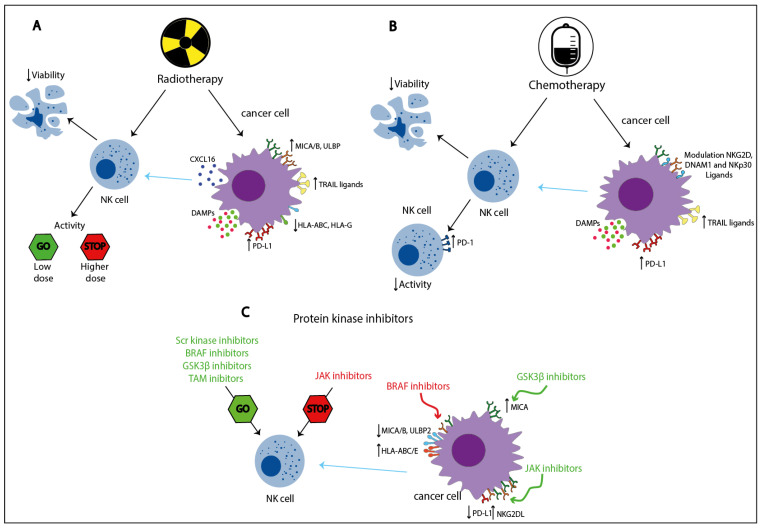Figure 2.
Direct and indirect effects of radiotherapy, chemotherapy, and protein kinase inhibitors on NK cell activity. Radiotherapy (A) and chemotherapy (B) cause cell damage, often leading to NK cell impairment, whereas protein kinase inhibitors (C) target specific signaling pathways resulting in either increased or decreased NK cell activity depending on the pathway involved. These treatments can also induce the modulation of various NK cell ligands on tumor cells and the release of damage-associated molecular patterns (DAMPs), indirectly affecting NK cell functions. Red arrows: inhibitory effects; green arrows: stimulatory effects; blue arrows: indirect effects, modulating the tumor cell’s susceptibility to NK-mediated cytolysis. ULBP1-6: UL16 binding protein 1-6; MICA: MHC class I polypeptide–related sequence; TRAIL: tumor necrosis factor-related apoptosis-inducing ligand; HLA: human leukocyte antigen; PD-(L)1: programmed cell death protein (ligand) 1, NKG: natural killer receptor; NCR: natural cytotoxicity receptors; BRAF: B-rapidly accelerated fibrosarcoma; GSK-3β: Glycogen synthase kinase-3β; JAK: Janus kinase.

